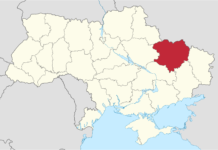Early this morning (1/16/24) Iran’s Islamic Revolutionary Guard Corps (IRGC) launched missile attacks on targets in Iraq and Syria, a move that has raised concerns about the escalating regional tensions. These strikes were Iran’s response to what they perceived as threats and hostile actions in the region.
The missile strike in Erbil, the capital of Iraq’s semi-autonomous Kurdish region, was particularly notable as it marks the second Iranian attack on the city in recent years. This strike reportedly targeted the home of a Kurdish businessman, Baz Karim Barzanji, who is said to be close to Erbil’s ruling Kurdish Democratic Party. The Iranian regime has accused Israel and the United States of being behind various attacks and hostilities, including an Israeli air strike in Syria that killed two IRGC members. Tehran has vowed a “harsh response” to these perceived aggressions.
Iran’s IRGC stated that the missile attacks were directed at one of the main headquarters of Israel’s spy agency Mossad in Iraq’s Kurdistan region. They accused this Mossad headquarters of conducting espionage operations and planning terror attacks in the region, particularly against Iran. However, it’s important to note that there has been no evidence provided to support these claims of Mossad’s presence in the Kurdish regional government.
The broader context of these attacks includes the ongoing conflict between Israel and Iran, with fears that it might spill over into a wider regional war. Iran supports groups such as Hamas in Gaza and Hezbollah in Lebanon, both of which are engaged in conflict with the Israeli military. Additionally, Iran backs the Houthi rebels in Yemen, who have clashed with the US-led maritime coalition in the Red Sea.
These missile strikes are seen by some experts as a demonstration of Iranian military power, showcasing their capability to hit targets in Syria and Iraq simultaneously, at a long range of approximately 1,200km. The use of Kheibar Shekan or “fortress breaker” missiles, with a claimed range of 1,400km, was specifically highlighted.
The situation remains tense, with the possibility of further escalations in the region. The strikes have brought into focus the intricate balance of power and the ongoing conflicts in the Middle East, where multiple actors are involved in a complex web of alliances and hostilities
Iraq = green
Syria = orange
Image is licensed under the Creative Commons Attribution-Share Alike 3.0 Unported license and was created by P. S. Burton.










